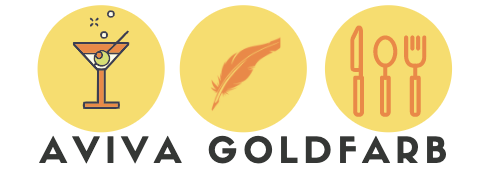This happens to clients I work with all the time: You just opened a restaurant, bar, or bakery and you are bursting with excitement about all the thought you put into the concept, the beautiful design, delicious menu, and warm hospitality. You feel absolutely certain that when you open the doors, customers will see the beauty of what you have created, and stream in, become loyal regulars, and revenue will start flowing.
Here’s how it usually goes instead: Sometimes there is an initial buzz and pop of customers and sales when you open the doors. What usually happens after that is that you and your staff are too often sitting around worrying about why the place is empty, how you will get the word out, how you’ll pay off loans and make payroll, and whether you made a huge mistake.

Building a Marketing System for Restaurants, Bars and Bakeries
In my 8 years working with restaurants, bars and bakeries to build sales through marketing, what we have learned is that marketing your business on a consistent basis is as essential as ordering the supplies, hiring staff, and preparing the food and drinks. There are so many spots vying for customers’ attention and dollars–to make sure your business succeeds, you need to build a marketing system to drive customers through the door and get them to come back. Without doing that, nearly all businesses will fail.
What amazes me is how often businesses spend hundreds of thousands of dollars to open a concept without giving much or any thought to marketing, and without even doing the basic, low-hanging fruit like optimizing their website and Google My Business profile, and making a marketing calendar, and then wonder why sales are abysmal. Don’t let that be you!
Below I have outlined marketing basics for restaurants that I share with and often help implement for clients. If you make sure you are at minimum doing all of the phase one items on the checklist, chances are high that you will build a solid customer base and revenue will grow.
Set aside time each week and each month for marketing to build your sales funnel and processes, and you will be steps ahead of the competition and on your way to building a successful business with steady sales.
If you’d like to set up a free marketing assessment, contact me at aviva@avivagoldfarb.com.
Restaurant Marketing Phase 1 (usually year one but it’s never too late to start):
Online business profiles
- Optimize online profiles on Google My Business, Yelp, Tripadvisor, Apple. Make sure all details are correct, like hours, location, offerings/features, and add professional photos where applicable.
- Mark calendar to check and update monthly
Online Reviews
Drive, monitor and respond to online reviews (and learn from them!). Volume and details of both drive SEO and conversion.
Website
- It is so essential to have an appealing and effective website that gives clear and easy to find information
- Make sure hours and address are clearly listed on homepage
- Have a “contact us” form and/or email address so you don’t lose potential sales
- Check all website links and forms monthly to make sure they aren’t broken
- Set up a free service to alert you if your website is down
- Collect emails with a pop up offer such as a discount on first order
Email marketing
Email marketing is one of THE most effective strategies to steadily drive reservations and sales!
- Create an attractive branded email template
- Create an email marketing calendar (see marketing calendar below)
- Email your list 2 – 4 times/month via a reputable email marketing provider such as Toast, Square, Mailchimp, etc.
- Write a compelling and short subject line including 1 – 2 emojis
- Have a clear call to action on all emails (i.e. “Reserve Now” or “Order Now”)
- Test links and text in emails by sending it to yourself before sending it to the whole list
- Steadily grow your email list by Importing emails weekly from online ordering or POS system (even better, set that up to happen automatically), and collecting emails at events
- Monitor open, click and sales results and adjust your plan for effective email marketing
Social media

- Have a clear and concise bio with location address and website link
- Use high quality photos and videos
- Pin important evergreen content like menu or specials
- Post consistent and effective social media content including User Generated Content and strategic influencer marketing
- Respond/repost quickly to social media posts/tags, DMs
Media relations/Earned Media

- Keep and update a media list and keep in touch every couple of months by email with updates
- Set up alerts for your business name and your name in Google Alerts and Talkwalker so you can track, share, and respond
- Save media mentions in a Google sheet or other spreadsheet
- Share media placements on social media for credibility
- Add key members of the media to customer email list to keep them updated when there’s news
Menus
- Consider a quarterly menu refresh–customers are drawn to what’s new
- Communicate updates on website and to customers in-store, social media, earned media
- Make sure front of house staff knows how to talk about it with confidence
- Evaluate and update menus based on customer feedback and preferences
- Note dietary restrictions on menu (vegan, gluten free, vegetarian, nut free, etc.)
- Promote updates via media/social media/email
Signage

Create professionally designed and printed and branded In-store signage (a-frame, cash wraps, table tents, check presenters). No schlocky paper signs!
Grassroots marketing
- Keep and update spreadsheet of business contacts, nearby residential and office buildings, organizations, including Chamber of Commerce, BIDs, etc.
- Add to email list and reach out every month or two to keep them updated
- Join their email lists to learn about important local events and opportunities
Marketing Calendar
- Create and update a marketing calendar for the year that includes major holidays, and other events that are relevant to your location such as concerts or games if you are near a venue, neighborhood events, even things like major movie releases that you can potentially tie in to your menu with special promotions.
- Use the calendar as a guide for planning your social, email, and media marketing
Important but so often overlooked
- Create and use a password management system for all online accounts
- Make sure you have all of those logins and passwords even if consultants set them up (Best if you set them up initially and add others who need access). I can’t tell you how many hours I have spent helping clients track this important information down, or even helping them create new and sometimes less optimal social media profiles when they can’t access it.
Phase 2 (usually starting in year 2):
Events

- Do special events or recurring events to drive reasons for customers to visit or come back. (recurring weeknight specials such as ½ price wine, special wine dinners, live music, trivia, fundraisers, etc.)
- Make sure and promote them via email, media, and social media
Promos

- Do occasional promos to draw interest (Launch and track to see how effective and what could be improved).
- These can include or be centered around local/national holidays and events, including BOGO, free item, discount on delivery, etc.
Digital marketing
Work with a seasoned professional to determine if these strategies are right for your business and to implement them:
- SEM digital ads
- Social ads and boosted posts
- SEO
Bag stuffers/Bouncebacks with aggressive offers to drive repeat business, and draw new guests to online ordering, loyalty programs, etc.
Catering and Private/semi-private events (if appropriate for your business)
Loyalty program (especially for quick service brands)

Text marketing (especially for quick service brands)
Partnerships with brands or other local businesses
Charitable donations
- Strategic donations to auctions/charities with confirmation or in-kind marketing
- Set a budget and track
Postcard mailers with aggressive offers to nearby zip codes and appropriate demographics
VIP list to stay in touch with—people who are great at spreading word. Send occasional thank you offers/special invites to make them feel appreciated and so they will keep your restaurant top of mind.
Delivery Apps: Strategic promotions with third party apps (Doordash, etc.)

Notes:
- Decide on your Key Performance Indicators (sales, email list size and other metrics, social following and engagement, online ratings, etc.) and track and measure everything at weekly, bi-weekly, or monthly marketing team meetings.
- Schedule and hold quarterly planning meetings at least 2 months in advance of the quarter to get ahead of promotions.
When you are ready, hire a marketing consultant, one who specializes in marketing for restaurants, bars and bakeries, to help you stay ahead and on top of all of these opportunities and to run the marketing meetings and manage the marketing calendar.
What marketing basics for restaurants did I miss? What else has worked for you? Please share below in the comments.

